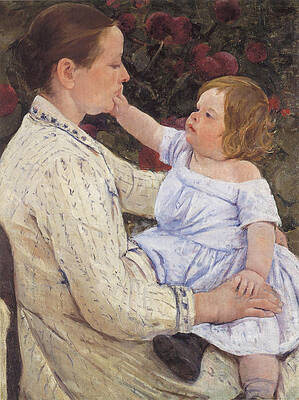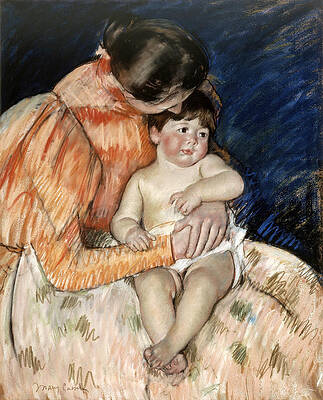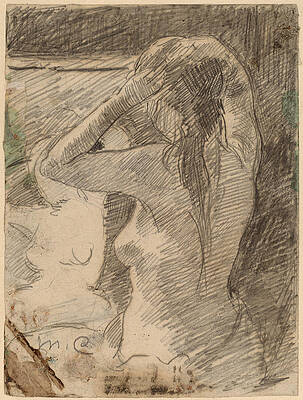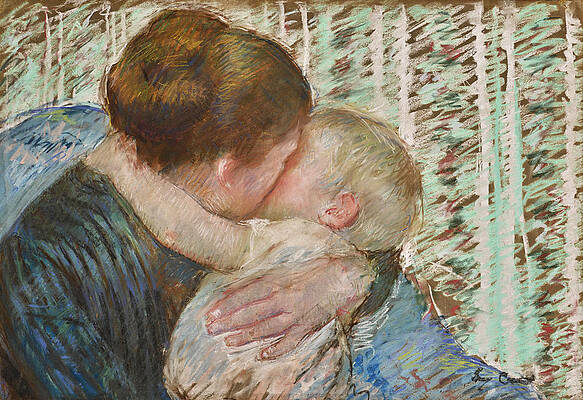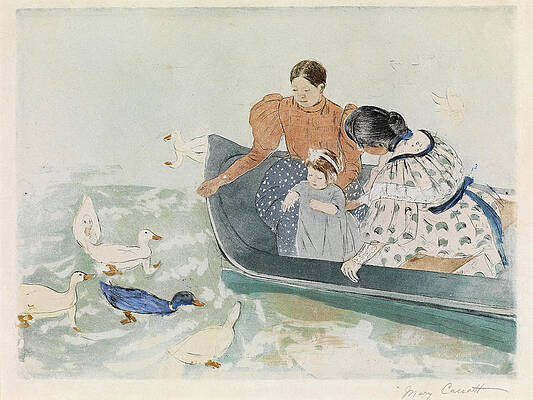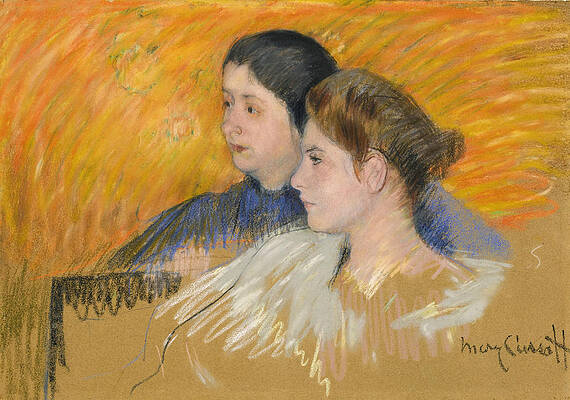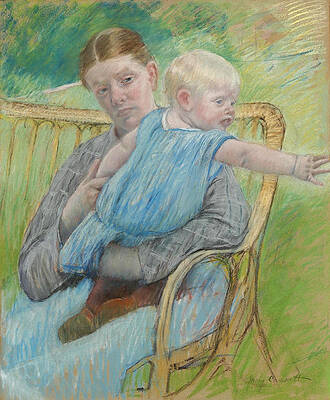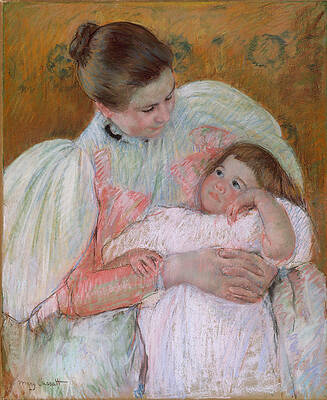Mary Cassatt
Family Group Reading
Cassatt Study of Mother Jeanne's Head, looking Down
Mary Ellison Embroidering
Children Playing on the Beach
Maternal Caress
In the Loge
The Cup of Tea
Portrait of Alexander J. Cassatt and His Son Robert Kelso Cassatt
Girl Arranging Her Hair
The Child's Caress
The Boating Party
Little Girl in a Blue Armchair
Young Mother Sewing
A Woman and a Girl Driving
The Caress
On the Balcony
Mother About to Wash Her Sleepy Child
Roman Girl
Susan Comforting the Baby
Mother and Child 2
Mother And Child 3
Woman with a Red Zinnia
Young Woman Wearing a Ruff
Child in a Straw Hat
Study for Francoise in a Round-backed Chair Reading
Mother and Child with a Rose Scarf
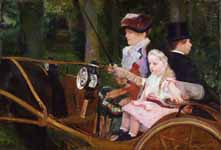
A Woman and a Girl Driving. Mary Stevenson Cassatt
Mother and Child
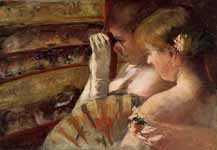
A Corner of the Loge aka In the Box
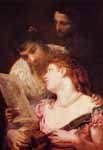

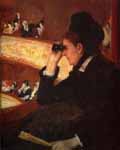
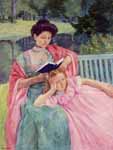
Auguste Reading to Her Daughter
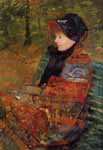
Autumn aka Profile of Lydia Cassatt
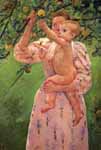
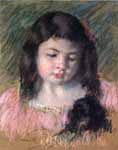
Bust of Francoise Looking Down

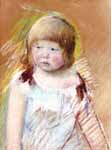
Child with Bangs in a Blue Dress
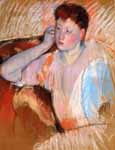
Clarissa Turned Left with Her Hand to Her Ear
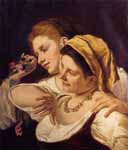


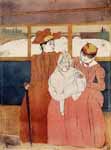
Interior of a Tramway Passing a Bridge
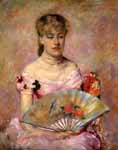
Lady with a Fan aka Portrait of Anne Charlotte Gaillard
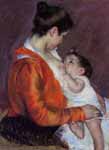
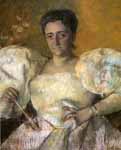
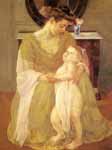
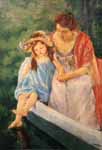

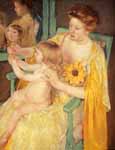
Mother Wearing A Sunflower On Her Dress

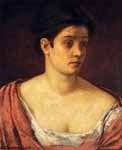
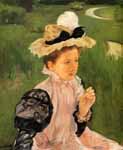
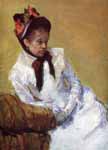
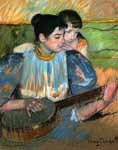
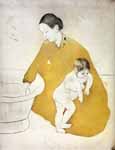


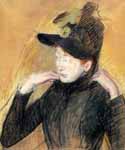
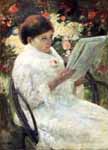
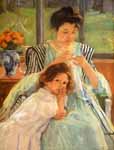
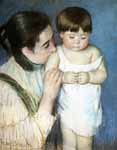
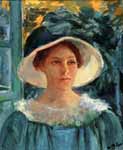
Young Woman In Green Outdoors In The Sun
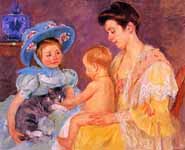
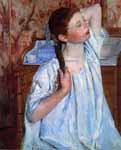
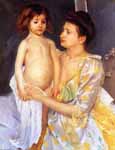
Jules Being Dried by His Mother
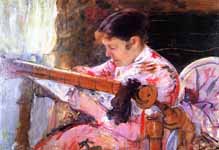

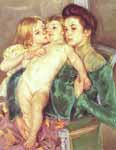
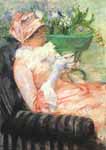

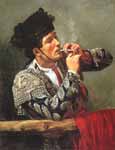
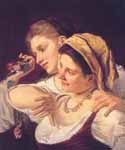
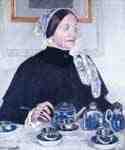

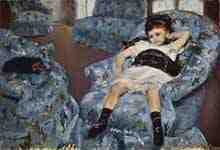
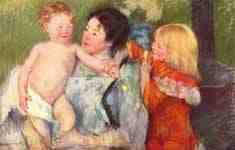
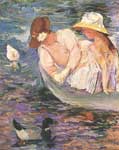
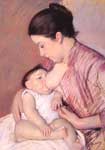
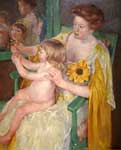

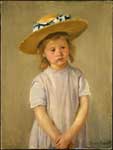
The Coiffure
In the Omnibus
Sketch for Margot Embracing Her Mother. No 2
A Goodnight Hug
Margot in Orange Dress
Mother and Child
Adaline Havemeyer in a White Hat
Sleepy Baby
Under the Horse-Chestnut Tree
Feeding the ducks
The Black Hat
The Bath
The Barefooted Child. Breskin 160
Woman's Head with Large Hat
Madame and Her Maid
Mathilde Holding a Baby Who Reaches Out to Right
Margot in a Big Hat
Nurse and Child



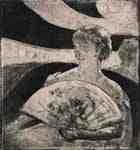
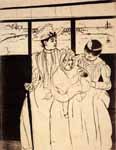
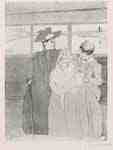
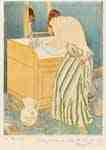

Mother breastfeeding her child
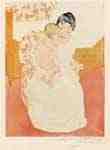
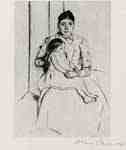
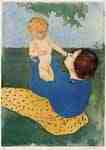
Fine Art Prints | Greeting Cards | iPhone Cases | Tote Bags | Clothing | Lifestyle | Beach ...
Mary Stevenson Cassatt (/kəˈsæt/; May 22, 1844 – June 14, 1926) was an American painter and printmaker. She was born in Pennsylvania, but lived much of her adult life in France, where she first befriended Edgar Degas and later exhibited among the Impressionists. Cassatt often created images of the social and private lives of women, with particular emphasis on the intimate bonds between mothers and children.
She was described by Gustave Geffroy in 1894 as one of "les trois grandes dames" of Impressionism alongside Marie Bracquemond and Berthe Morisot.[1]
Early life
Cassatt was born in Allegheny City, Pennsylvania, which is now part of Pittsburgh.[2] She was born into an upper-middle-class family:[3] her father, Robert Simpson Cassat (later Cassatt), was a successful stockbroker and land speculator. He was descended from the French Huguenot Jacques Cossart, who came to New Amsterdam in 1662.[4] Her mother, Katherine Kelso Johnston, came from a banking family. Katherine Cassatt, educated and very well read, had a profound influence on her daughter.[5] To that effect, Cassatt's lifelong friend Louisine Havemeyer wrote in her memoirs: "Anyone who had the privilege of knowing Mary Cassatt's mother would know at once that it was from her and her alone that [Mary] inherited her ability."[6] The ancestral name had been Cossart.[7] Cassatt was a distant cousin of artist Robert Henri.[8] Cassatt was one of seven children, of whom two died in infancy. One brother, Alexander Johnston Cassatt, later became president of the Pennsylvania Railroad. Her family moved eastward, first to Lancaster, Pennsylvania, then to the Philadelphia area, where she commenced her schooling at the age of six.
Cassatt grew up in an environment that viewed travel as integral to education; she spent five years in Europe and visited many of the capitals, including London, Paris, and Berlin. While abroad she learned German and French and had her first lessons in drawing and music.[9] It is likely that her first exposure to French artists Ingres, Delacroix, Corot, and Courbet was at the Paris World’s Fair of 1855. Also in the exhibition were Degas and Pissarro, both of whom were later her colleagues and mentors.[10]
Though her family objected to her becoming a professional artist, Cassatt began studying painting at the Pennsylvania Academy of the Fine Arts in Philadelphia at the early age of 15.[11] Part of her parents' concern may have been Cassatt's exposure to feminist ideas and the bohemian behavior of some of the male students. Although about 20 percent of the students were female, most viewed art as a socially valuable skill; few of them were determined, as Cassatt was, to make art their career.[12] She continued her studies from 1861 through 1865, the duration of the American Civil War.[2] Among her fellow students was Thomas Eakins, later the controversial director of the Academy.
Impatient with the slow pace of instruction and the patronizing attitude of the male students and teachers, she decided to study the old masters on her own. She later said, "There was no teaching" at the Academy. Female students could not use live models (until somewhat later) and the principal training was primarily drawing from casts.[13]
Cassatt decided to end her studies (at that time, no degree was granted). After overcoming her father's objections, she moved to Paris in 1866, with her mother and family friends acting as chaperones.[14] Since women could not yet attend the École des Beaux-Arts, she applied to study privately with masters from the school[15] and was accepted to study with Jean-Léon Gérôme, a highly regarded teacher known for his hyper-realistic technique and his depiction of exotic subjects. A few months later Gérôme also accepted Eakins as a student.[15] Cassatt augmented her artistic training with daily copying in the Louvre (she obtained the required permit, which was necessary to control the "copyists", usually low-paid women, who daily filled the museum to paint copies for sale). The museum also served as a social meeting place for Frenchmen and American female students, who, like Cassatt, were not allowed to attend cafes where the avant-garde socialized. In this manner, fellow artist and friend Elizabeth Jane Gardner met and married famed academic painter William-Adolphe Bouguereau.[16]
The Boating Party by Mary Cassatt, 1893–94, oil on canvas, 35½ × 46 in., National Gallery of Art, Washington
Toward the end of 1866, she joined a painting class taught by Charles Chaplin, a noted genre artist. In 1868, Cassatt also studied with artist Thomas Couture, whose subjects were mostly romantic and urban.[17] On trips to the countryside, the students drew from life, particularly the peasants going about their daily activities. In 1868 one of her paintings, A Mandoline Player, was accepted for the first time by the selection jury for the Paris Salon. With Elizabeth Jane Gardner, whose work was also accepted by the jury that year, Cassatt was one of two American women to first exhibit in the Salon.[4] A Mandoline Player is in the Romantic style of Corot and Couture,[18] and is one of only two paintings from the first decade of her career that can be documented today.[19]
The French art scene was in a process of change, as radical artists such as Courbet and Manet tried to break away from accepted Academic tradition and the Impressionists were in their formative years. Cassatt's friend Eliza Haldeman wrote home that artists "are leaving the Academy style and each seeking a new way, consequently just now everything is Chaos".[16] Cassatt, on the other hand, continued to work in the traditional manner, submitting works to the Salon for over ten years, with increasing frustration.
Returning to the United States in the late summer of 1870—as the Franco-Prussian War was starting—Cassatt lived with her family in Altoona. Her father continued to resist her chosen vocation, and paid for her basic needs, but not her art supplies.[20] She placed two of her paintings in a New York gallery and found many admirers but no purchasers. She was also dismayed at the lack of paintings to study while staying at her summer residence. Cassatt even considered giving up art, as she was determined to make an independent living. She wrote in a letter of July 1871, "I have given up my studio & torn up my father's portrait, & have not touched a brush for six weeks nor ever will again until I see some prospect of getting back to Europe. I am very anxious to go out west next fall & get some employment, but I have not yet decided where."[21]
Cassatt traveled to Chicago to try her luck, but lost some of her early paintings in the Great Chicago Fire of 1871.[22] Shortly afterward, her work attracted the attention of the Archbishop of Pittsburgh, who commissioned her to paint two copies of paintings by Correggio in Parma, Italy, advancing her enough money to cover her travel expenses and part of her stay. In her excitement she wrote, "O how wild I am to get to work, my fingers farely itch & my eyes water to see a fine picture again".[23] With Emily Sartain, a fellow artist from a well-regarded artistic family from Philadelphia, Cassatt set out for Europe again.
Impressionism
Within months of her return to Europe in the autumn of 1871, Cassatt's prospects had brightened. Her painting Two Women Throwing Flowers During Carnival was well received in the Salon of 1872, and was purchased. She attracted much favorable notice in Parma and was supported and encouraged by the art community there: "All Parma is talking of Miss Cassatt and her picture, and everyone is anxious to know her".[24]
After completing her commission for the archbishop, Cassatt traveled to Madrid and Seville, where she painted a group of paintings of Spanish subjects, including Spanish Dancer Wearing a Lace Mantilla (1873, in the National Museum of American Art, Smithsonian Institution). In 1874, she made the decision to take up residence in France. She was joined by her sister Lydia who shared an apartment with her. Cassatt opened a studio in Paris. Louisa May Alcott's sister, Abigail May Alcott, was then an art student in Paris and visited Cassatt.[4] Cassatt continued to express criticism of the politics of the Salon and the conventional taste that prevailed there. She was blunt in her comments, as reported by Sartain, who wrote: "she is entirely too slashing, snubs all modern art, disdains the Salon pictures of Cabanel, Bonnat, all the names we are used to revere".[25]
Cassatt saw that works by female artists were often dismissed with contempt unless the artist had a friend or protector on the jury, and she would not flirt with jurors to curry favor.[26] Her cynicism grew when one of the two pictures she submitted in 1875 was refused by the jury, only to be accepted the following year after she darkened the background. She had quarrels with Sartain, who thought Cassatt too outspoken and self-centered, and eventually they parted. Out of her distress and self-criticism, Cassatt decided that she needed to move away from genre paintings and onto more fashionable subjects, in order to attract portrait commissions from American socialites abroad, but that attempt bore little fruit at first.[27]
In 1877, both her entries were rejected, and for the first time in seven years she had no works in the Salon.[28] At this low point in her career she was invited by Edgar Degas to show her works with the Impressionists, a group that had begun their own series of independent exhibitions in 1874 with much attendant notoriety. The Impressionists (also known as the "Independents" or "Intransigents") had no formal manifesto and varied considerably in subject matter and technique. They tended to prefer open air painting and the application of vibrant color in separate strokes with little pre-mixing, which allows the eye to merge the results in an “impressionistic” manner. The Impressionists had been receiving the wrath of the critics for several years. Henry Bacon, a friend of the Cassatts, thought that the Impressionists were so radical that they were "afflicted with some hitherto unknown disease of the eye".[29] They already had one female member, artist Berthe Morisot, who became Cassatt’s friend and colleague.
Cassatt admired Degas, whose pastels had made a powerful impression on her when she encountered them in an art dealer's window in 1875. "I used to go and flatten my nose against that window and absorb all I could of his art," she later recalled. "It changed my life. I saw art then as I wanted to see it."[30] She accepted Degas' invitation with enthusiasm, and began preparing paintings for the next Impressionist show, planned for 1878, which (after a postponement because of the World's Fair) took place on April 10, 1879. She felt comfortable with the Impressionists and joined their cause enthusiastically, declaring: "we are carrying on a despairing fight & need all our forces".[31] Unable to attend cafes with them without attracting unfavorable attention, she met with them privately and at exhibitions. She now hoped for commercial success selling paintings to the sophisticated Parisians who preferred the avant-garde. Her style had gained a new spontaneity during the intervening two years. Previously a studio-bound artist, she had adopted the practice of carrying a sketchbook with her while out-of-doors or at the theater, and recording the scenes she saw.[32]
In 1877, Cassatt was joined in Paris by her father and mother, who returned with her sister Lydia, all eventually to share a large apartment on the fifth floor of 13, Avenue Trudaine, (48.8816°N 2.3446°E). Mary valued their companionship, as neither she nor Lydia had married. Mary had decided early in life that marriage would be incompatible with her career. Lydia, who was frequently painted by her sister, suffered from recurrent bouts of illness, and her death in 1882 left Cassatt temporarily unable to work.[33]
Cassatt's father insisted that her studio and supplies be covered by her sales, which were still meager. Afraid of having to paint "potboilers" to make ends meet, Cassatt applied herself to produce some quality paintings for the next Impressionist exhibition. Three of her most accomplished works from 1878 were Portrait of the Artist (self-portrait), Little Girl in a Blue Armchair, and Reading Le Figaro (portrait of her mother).
Degas had considerable influence on Cassatt. She became extremely proficient in the use of pastels, eventually creating many of her most important works in this medium. Degas also introduced her to etching, of which he was a recognized master. The two worked side-by-side for a while, and her draftsmanship gained considerable strength under his tutelage. He depicted her in a series of etchings recording their trips to the Louvre. She treasured his friendship but learned not to expect too much from his fickle and temperamental nature after a project they were collaborating on at the time, a proposed journal devoted to prints, was abruptly dropped by him.[34] The sophisticated and well-dressed Degas, then forty-five, was a welcome dinner guest at the Cassatt residence, and likewise they at his soirées.[35]
The Impressionist exhibit of 1879 was the most successful to date, despite the absence of Renoir, Sisley, Manet and Cézanne, who were attempting once again to gain recognition at the Salon. Through the efforts of Gustave Caillebotte, who organized and underwrote the show, the group made a profit and sold many works, although the criticism continued as harsh as ever. The Revue des Deux Mondes wrote, "M. Degas and Mlle. Cassatt are, nevertheless, the only artists who distinguish themselves... and who offer some attraction and some excuse in the pretentious show of window dressing and infantile daubing".[36]
Cassatt displayed eleven works, including Lydia in a Loge, Wearing a Pearl Necklace, (Woman in a Loge). Although critics claimed that Cassatt's colors were too bright and that her portraits were too accurate to be flattering to the subjects, her work was not savaged as was Monet's, whose circumstances were the most desperate of all the Impressionists at that time. She used her share of the profits to purchase a work by Degas and one by Monet.[37] She participated in the Impressionist Exhibitions that followed in 1880 and 1881, and she remained an active member of the Impressionist circle until 1886. In 1886, Cassatt provided two paintings for the first Impressionist exhibition in the US, organized by art dealer Paul Durand-Ruel. Her friend Louisine Elder married Harry Havemeyer in 1883, and with Cassatt as advisor, the couple began collecting the Impressionists on a grand scale. Much of their vast collection is now in the Metropolitan Museum of Art in New York City.[38]
Cassatt also made several portraits of family members during that period, of which Portrait of Alexander Cassatt and His Son Robert Kelso (1885) is one of her best regarded. Cassatt's style then evolved, and she moved away from Impressionism to a simpler, more straightforward approach. She began to exhibit her works in New York galleries as well. After 1886, Cassatt no longer identified herself with any art movement and experimented with a variety of techniques.
New Woman
Mary Cassatt depicted the "New Woman" of the 19th century from the woman's perspective. As a successful, highly trained woman artist who never married, Cassatt—like Ellen Day Hale, Elizabeth Coffin, Elizabeth Nourse and Cecilia Beaux—personified the "New Woman".[39] She "initiated the profound beginnings in recreating the image of the 'new' women", drawn from the influence of her intelligent and active mother, Katherine Cassatt, who believed in educating women to be knowledgeable and socially active. She is depicted in Reading 'Le Figaro' (1878).[40]
Relationship with Degas
For Cassatt's relationship with Edgar Degas, also see Little Girl in a Blue Armchair
Cassatt and Degas had a long period of collaboration. The two had studios close together, Cassatt at 19, rue Laval, (48.8808°N 2.3384°E), Degas at 4, rue Frochot, (48.8811°N 2.3377°E),[41] less than a five minute stroll apart, and Degas got into the habit of looking in at Cassat's studio and offering her advice and helping her get models.[42]
They had much in common: they shared similar tastes in art and literature, came from affluent backgrounds, had studied painting in Italy, and both were independent, never marrying. The degree of intimacy between them cannot be assessed now, as no letters survive, but it is unlikely they were in a relationship given their conservative social backgrounds and strong moral principles. Several of Vincent van Gogh's letters attest Degas' sexual continence.[43] Degas introduced Cassatt to pastel and engraving, both of which Cassatt quickly mastered, while for her part Cassatt was instrumental in helping Degas sell his paintings and promoting his reputation in America.[44]
Both regarded themselves as figure painters, and the art historian George Shacklelford suggests they were influenced by the art critic Louis Edmond Duranty's appeal in his pamphlet The New Painting for a revitalization in figure painting: "Let us take leave of the stylized human body, which is treated like a vase. What we need is the characteristic modern person in his clothes, in the midst of his social surroundings, at home or out in the street." [45][46]
After Cassatt's parents and sister Lydia joined Cassatt in Paris in 1877, Degas, Cassatt, and Lydia were often to be seen at the Louvre studying art works together. Degas produced two prints, notable for their technical innovation, depicting Cassatt at the Louvre looking at art works while Lydia reads a guidebook. These were destined for a prints journal planned by Degas (together with Camille Pissarro and others), which never came to fruition. Cassatt frequently posed for Degas, notably for his millinery series trying on hats.
Around 1884 Degas made a portrait in oils of Cassatt, Mary Cassatt Seated, Holding Cards.[a] A circa 1880 Self-Portrait by Cassatt depicts her in the identical hat and dress, leading Griselda Pollock to speculate they were executed in a joint painting session in the early years of their acquaintance.[48]
Cassatt and Degas worked most closely together in the fall and winter of 1879–80 when Cassatt was mastering her printmaking technique. Degas owned a small printing press, and by day she worked at his studio using his tools and press while in the evening she made studies for the etching plate the next day. However, in April 1880, Degas abruptly withdrew from the prints journal they had been collaborating on, and without his support the project folded. Degas' withdrawal piqued Cassatt who had worked hard at preparing a print, In the Opera Box, in a large edition of fifty impressions, no doubt destined for the journal. Although Cassatt's warm feelings for Degas were to last her entire life, she never again worked with him as closely as she had over the prints journal. Mathews notes that she ceased executing her theater scenes at this time.[49]
Degas was forthright in his views, as was Cassatt.[49] They clashed over the Dreyfus affair (early in her career she had executed a portrait of the art collector Moyse Dreyfus, a relative of the court-martialled lieutenant at the center of the affair).[b][51][52] Cassatt later expressed satisfaction at the irony of Lousine Havermeyer's 1915 joint exhibition of hers and Degas' work being held in aid of women's suffrage, equally capable of affectionately repeating Degas' antifemale comments as being estranged by them (when viewing her Two Women Picking Fruit for the first time, he had commented "No woman has the right to draw like that").[53] From the 1890s onwards their relationship took on a decidedly commercial aspect, as in general had Cassatt's other relations with the Impressionist circle;[52][54] nevertheless they continued to visit each other until Degas' death in 1917.[55]
Later life
The Child's Bath (The Bath) by Mary Cassatt, 1893, oil on canvas, 39½ × 26 in., Art Institute of Chicago [56]
Cassatt's popular reputation is based on an extensive series of rigorously drawn, tenderly observed, yet largely unsentimental paintings and prints on the theme of the mother and child. The earliest dated work on this subject is the drypoint Gardner Held by His Mother (an impression inscribed "Jan/88" is in the New York Public Library),[57] although she had painted a few earlier works on the theme. Some of these works depict her own relatives, friends, or clients, although in her later years she generally used professional models in compositions that are often reminiscent of Italian Renaissance depictions of the Madonna and Child. After 1900, she concentrated almost exclusively on mother-and-child subjects.[58]
The 1890s were Cassatt's busiest and most creative time. She had matured considerably and became more diplomatic and less blunt in her opinions. She also became a role model for young American artists who sought her advice. Among them was Lucy A. Bacon, whom Cassatt introduced to Camille Pissarro. Though the Impressionist group disbanded, Cassatt still had contact with some of the members, including Renoir, Monet, and Pissarro.[59]
Mary Cassatt, Mother and Child Before a Pool, ca. 1898. Drypoint and aquatint on laid paper, Brooklyn Museum
In 1891, she exhibited a series of highly original colored drypoint and aquatint prints, including Woman Bathing and The Coiffure, inspired by the Japanese masters shown in Paris the year before. (See Japonism) Cassatt was attracted to the simplicity and clarity of Japanese design, and the skillful use of blocks of color. In her interpretation, she used primarily light, delicate pastel colors and avoided black (a "forbidden" color among the Impressionists). Adelyn D. Breeskin, Cassatt's most noted historian and the author of two catalogue raisonnés of her work, notes that these colored prints, "now stand as her most original contribution... adding a new chapter to the history of graphic arts...technically, as color prints, they have never been surpassed".[60]
Under the Horse Chestnut Tree by Mary Cassatt, 1898, drypoint and aquatint print, 19 x 15.4 in., Museum of Fine Arts, Houston.
Also in 1891, Chicago businesswoman Bertha Palmer approached Cassatt to paint a 12' × 58' mural about "Modern Woman" for the Women's Building for the World's Columbian Exposition to be held in 1893. Cassatt completed the project over the next two years while living in France with her mother. The mural was designed as a triptych. The central theme was titled Young Women Plucking the Fruits of Knowledge or Science. The left panel was Young Girls Pursuing Fame and the right panel Arts, Music, Dancing. The mural displays a community of women apart from their relation to men, as accomplished persons in their own right. Palmer considered Cassatt to be an American treasure and could think of no one better to paint a mural at an exposition that was to do so much to focus the world's attention on the status of women.[61] Unfortunately the mural did not survive following the run of the exhibition when the building was torn down. Cassatt made several studies and paintings on themes similar to those in the mural, so it is possible to see her development of those ideas and images.[62] Cassatt also exhibited other paintings in the Exposition.
As the new century arrived, Cassatt served as an advisor to several major art collectors and stipulated that they eventually donate their purchases to American art museums. In recognition of her contributions to the arts, France awarded her the Légion d'honneur in 1904. Although instrumental in advising American collectors, recognition of her art came more slowly in the United States. Even among her family members back in America, she received little recognition and was totally overshadowed by her famous brother.[63]
Mère et enfant (Reine Lefebre and Margot before a Window), c.1902
Mary Cassatt's brother, Alexander Cassatt, was president of the Pennsylvania Railroad from 1899 until his death in 1906. She was shaken, as they had been close, but she continued to be very productive in the years leading up to 1910.[64] An increasing sentimentality is apparent in her work of the 1900s; her work was popular with the public and the critics, but she was no longer breaking new ground, and her Impressionist colleagues who once provided stimulation and criticism were dying off. She was hostile to such new developments in art as post-Impressionism, Fauvism and Cubism. [65] Two of her works appeared in the Armory Show of 1913, both images of a mother and child.[66]
A trip to Egypt in 1910 impressed Cassatt with the beauty of its ancient art, but was followed by a crisis of creativity; not only had the trip exhausted her, but she declared herself "crushed by the strength of this Art", saying, "I fought against it but it conquered, it is surely the greatest Art the past has left us ... how are my feeble hands to ever paint the effect on me."[67] Diagnosed with diabetes, rheumatism, neuralgia, and cataracts in 1911, she did not slow down, but after 1914 she was forced to stop painting as she became almost blind.
A feminist from an early age, albeit in a nuanced and private way and objecting to being stereotyped as a "woman artist", she supported women's suffrage, and in 1915 showed eighteen works in an exhibition supporting the movement organised by Louisine Havemeyer, a committed and active feminist. The exhibition brought her into conflict with her sister-in-law Eugenie Carter Cassatt, who was anti-suffrage and who boycotted the show along with Philadelphia society in general. Cassatt responded by selling off her work that was otherwise destined for her heirs. In particular The Boating Party, thought to have been inspired by the birth of Eugenie's daughter Ellen Mary, was bought by the National Gallery, Washington DC.[68][69]
Cassatt died on June 14, 1926 at Château de Beaufresne, near Paris, and was buried in the family vault at Le Mesnil-Théribus, France.
Legacy
Mary Cassatt inspired many Canadian women artists who were members of the Beaver Hall Group.
The SS Mary Cassatt was a World War II Liberty ship, launched May 16, 1943.
A quartet of young Juilliard string musicians formed the all-female Cassatt Quartet in 1985, named in honor of the painter. In 2009, the award-winning group recorded String Quartets Nos. 1-3 (Cassatt String Quartet) by composer Dan Welcher; the 3rd quartet on the album was written inspired by the work of Mary Cassatt as well.
In 1966, Cassatt's painting The Boating Party was reproduced on a US postage stamp. Later she was honored by the United States Postal Service with a 23¢ Great Americans series postage stamp. In 2003, four of her paintings (Young Mother (1888), Children Playing on the Beach (1884), On a Balcony (1878/79) and Child in a Straw Hat (circa 1886)) were reproduced on the third issue in the American Treasures series.
On May 22, 2009, she was honored by a Google Doodle in recognition of her birthday.[70]
Cassatt's paintings have sold for as much as $4.0 million, the record price of $4,072,500 being set in 1996 at Christie's, New York, for In the Box.[71]
Notes
The cards are probably cartes de visite, used by artists and dealers at the time to document their work. Stephanie Strasnick suggests that Degas used them as a device to represent Cassatt as a peer and an artist in her own right, although Cassatt later took an aversion to the portrait and had it sold.[47]
Pro-Dreyfus included Camille Pissarro, Claude Monet, Paul Signac and Mary Cassatt. Anti-Dreyfus included Edgar Degas, Paul Cézanne, Auguste Rodin and Pierre-Auguste Renoir.[50]
References
Geffroy, Gustave (1894), "Histoire de l'Impressionnisme", La Vie artistique: 268.
Roberts, Norma J. (1988). The American Collections. Columbus: Columbus Museum of Art. p. 36. ISBN 978-0-918881-20-5.
Pollock 1998, p. 280.
Rubinstein, Charlotte Streifer (1982). American women artists : from early Indian times to the present. Boston, Mass. u.a.: Hall u.a. ISBN 0816185352.
Pollock 1998, pp. 281–82.
Havemeyer, Louisine (1961). Sixteen to sixty: memoirs of a collector. New York: Priv. Print. for the family of Mrs. H.O. Havemeyer and the Metropolitan Museum of Art. p. 272.
Mathews 1998, p. 3.
Perlman, Bennard B. (1991). Robert Henri: His Life and Art. New York: Dover Publications. p. 1. ISBN 978-0-486-26722-7.
Mathews 1998, p. 11.
McKown 1972, pp. 10–12.
Mathews 1998, p. 15.
Mathews 1994, p. 18.
McKown 1972, p. 16.
Mathews 1994, p. 29.
Mathews 1994, p. 31.
Mathews 1994, p. 32.
Mathews 1994, p. 54.
Mathews 1998, p. 47.
Mathews 1998, p. 54.
Mathews 1998, p. 75.
Mathews 1994, p. 74.
McKown 1972, p. 36.
Mathews 1994, p. 76.
Mathews 1994, p. 79.
Mathews 1994, p. 87.
Mathews 1998, pp. 104–105.
Mathews 1994, p. 96.
Mathews 1998, p. 100.
Mathews 1994, p. 107.
Mathews 1998, p. 114.
Mathews 1994, p. 118.
Mathews 1994, p. 125.
Mathews 1998, p. 163.
Mathews 1994, pp. 146-50.
Mathews, pp. 128-31, 147.
McKown 1972, p. 73.
McKown 1972, pp. 72–73.
Mathews 1994, p. 167.
Holly Pyne Connor; Newark Museum; Frick Art & Historical Center. Off the Pedestal: New Women in the Art of Homer, Chase, and Sargent. Rutgers University Press; 2006. ISBN 978-0-8135-3697-2. p. 25.
New Perspectives on Illustration: Gibson and Cassatt: Depicting the New Woman by Seo Kim. Norman Rockwell Museum. Retrieved March 18, 2014.
Barter, pp. 354-5 "Mary Cassatt's Paris" (map).
Mathews, p. 125.
"To Theo van Gogh. Arles, Friday, 4 May 1888". Vincent van Gogh: The Letters. Van Gogh Museum.
Bullard, p. 14.
Duranty 1876.
MoMA Highlights: 350 Works from The Museum of Modern Art, New York, p. 31, at Google Books
Strasnick, Stephanie. "Degas and Cassatt: The Untold Story of Their Artistic Friendship". ARTnews. Archived from the original on 28 March 2014.
Pollock 1998, p. 118.
Mathews, p. 149.
Meiseler, Stanley (9 July 2006). "History's new verdict on the Dreyfus case". Los Angeles Times. Archived from the original on 23 December 2013.
Mathhews 1994 p. 275.
Shackelford, p. 137.
Mathews, pp. 303, 308.
Mathews, pp. 189-90.
Mathews, pp. 312-3.
"The Child's Bath". The Art Institute of Chicago. Retrieved April 9, 2012.
Mathews 1998, p. 182 and note on p. 346.
Kloss 1985, p. 106.
McKown 1972, p. 155.
McKown 1972, pp. 124–126.
Lunardini, Christine A. (1997). What every American Should Know About Women's History. Holbrook, Mass.: Adams Media Corporation. p. 129. ISBN 978-1-55850-687-9.
Mary Cassatt's Lost Mural and Other Exhibits at the 1893 Exposition by K. L. Nichols
McKown 1972, p. 182.
Mathews 1998, p. 281.
Mathews 1998, p. 284.
"1913 Armory Show List by Gallery". New York Historical Society. Retrieved 1 February 2014.
Mathews 1998, p. 291.
Mathews 1994, pp. 306-10.
Mary Cassatt: A Life, p. 306, at Google Books
"Mary Cassatt's Birthday". Google. Retrieved April 9, 2012.
"Sale 8408 | Lot 70". Christie's. 23 May 1996. Archived from the original on 19 November 2013.
Bibliography
Mathews, Nancy Mowll (1994). Mary Cassatt: A Life. New York: Villard Books. ISBN 978-0-394-58497-3.
Mathews, Nancy Mowll (1998). Mary Cassatt: A Life. New Haven: Yale University Press. ISBN 978-0-585-36794-1.
McKown, Robin (1972). The World of Mary Cassatt. New York: Thomas Y. Crowell Co. ISBN 978-0-690-90274-7.
Kloss, William (1985). Treasures from the National Museum of American Art. Washington: National Museum of American Art. ISBN 978-0-87474-594-8.
Pollock, Griselda; Florence, Penny (2001). Looking back to the Future. Amsterdam: G+B Arts International. ISBN 978-90-5701-122-1.
Pollock, Griselda (1998). "Mary Cassatt: Painter of Women and Children". In Milroy, Elizabeth; Doezema, Marianne. Reading American Art. New Haven. ISBN 978-0-300-07348-5.
Shackelford, George T.M. (1998). "Pas de Deux: Mary Cassatt and Edgar Degas". In Barter, Judith A.. Mary Cassatt, modern woman / organized by Judith A. Barter ; with contributions by Erica E. Hirshler ... [et al.]. New York: Harry N. Abrams, Inc. pp. 109–43. ISBN 0810940892. LCCN 98007306.
White, John H., Jr. (Spring 1986). "America's most noteworthy railroaders". Railroad History 154: pp. 9–15. ISSN 0090-7847. OCLC 1785797.(mentions family relationship to Alexander Cassatt)
Further reading
Adelson, Warren; Bertalan, Sarah; Mathews, Nancy Mowll; Pinsky, Susan; Rosen, Marc (2008). Mary Cassatt: Prints and Drawings from the Collection of Ambroise Vollard. New York: Adelson Galleries. ISBN 0-9815801-0-6.
Pinsky, Susan; Rosen, Marc; Adelson, Warren; Cantor, Jay E.; Shapiro, Barbara Stern (2000). Mary Cassatt: Prints and Drawings from the Artist’s Studio. Princeton, NJ: Princeton University Press. ISBN 0-691-08887-X.
Mary Cassatt: Paintings and Prints, Frank Getlein
----
Fine Art Prints | Greeting Cards | Phone Cases | Lifestyle | Face Masks | Men's , Women' Apparel | Home Decor | jigsaw puzzles | Notebooks | Tapestries | ...
----
Artist
A - B - C - D - E - F - G - H - I - J - K - L - M -
N - O - P - Q - R - S - T - U - V - W - X - Y - Z
Retrieved from "http://en.wikipedia.org/"
All text is available under the terms of the GNU Free Documentation License














